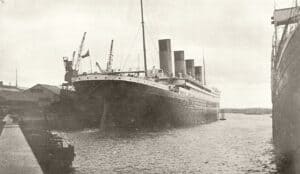When on 4th of October, 1957, the USSR launched Sputnik I (a 70 kgs bleeping sphere the size of a medicine ball) into Earth orbit, the effect in the United States was electrifying, since it seemed overnight to wipe out the feeling on invulnerability, the country had enjoyed since the explosion of the first nuclear bomb thirteen years before. One of the immediate reactions was the creation of the Advanced Research Projects Agency (ARPA) within the Ministry of Defense. Its mission was to apply state-of-the-art technology to US defense and to avoid being surprised (again!) by technological advances of the enemy. It was also given interim control of the US satellite program until the creation of NASA in October 1958.
ARPA became the technological think-tank of the American defense effort, employing directly a couple of hundred top scientists and with a budget sufficient for sub-contracting research to other top American institutions.
In 1962 ARPA opened a computer research program and appointed to its head an MIT scientist Joseph Licklider to lead it. Namely Licklider and his group and followers, took the first steps toward the global network-Internet. It was during this inventive era that a form of high speed Internet was initially created for different purposes. AT&T first introduced the T1 line to handle large digital telephone networks, as it carries 24 digital voice channels.
Some 40 years after Licklider’s futuristic ideas the global computer network—Internet has become a mainstream information, marketing, communication and whatnow tool. In 2009 the number of the Internet users reached 1.8 billion people, the number of web-sites reached 234 million, the number of emails sent reached 90 trillion (sadly, 81% percent of emails were spam). It is expected in the near future billion sensors in the home appliances, buildings, bridges, etc. to be connected to the Internet, for controlling, optimizing and securing purposes.
In this section will be examined some of the key events and people in the history of Internet from the very beginning—from the people, who dreamed for some features of today’s Internet, up to the beginning of 21st century, when Internet changed into something like universal panacea and hope for future. It has 4 sub-sections, containing 4 periods of the Internet’s development—The Dreamers (period up to 1960), Birth of the ARPANET (1960-1969), Maturing of the Net (1970-1989) and Internet conquers the world (1989 till now).
The image featured at the top of this post is ©G-Stock Studio/Shutterstock.com.



